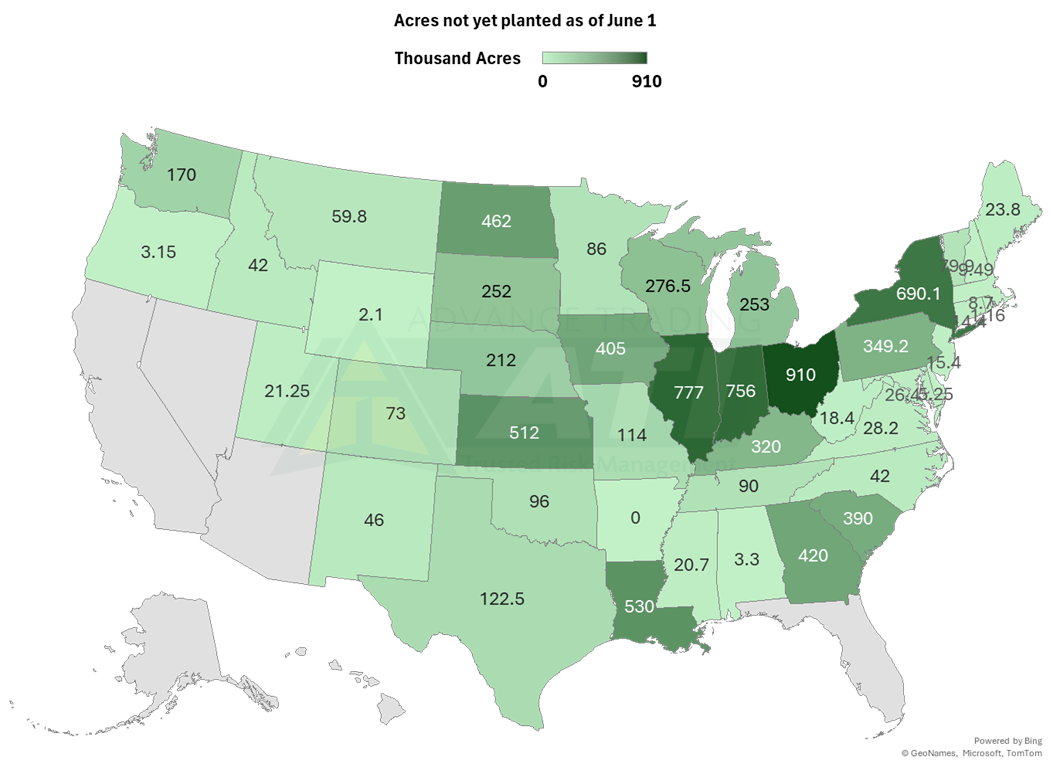Price volatility in new-crop corn has increased of late amid considerable uncertainty about U.S. corn production potential.
An effective risk management plan is extremely difficult, if not impossible, to execute if it is not carefully constructed prior to an unexpected market development. With that said, the preparation of an appropriate marketing strategy well in advance sets the stage for calm, systematic response to volatile markets.
The official start to summer is three weeks away, yet price volatility in new-crop corn futures has already begun to increase – largely based on considerable uncertainty about U.S. corn production potential and recent history that shows how quickly price action can change.
The chart below shows historical seasonal prices for December corn futures since 2012 and highlights the significant volatility of the contract.
- Troughs. December 2024 corn futures, for example, plummeted 80½ cents from May 24 to July 8. A similar pattern developed in 2023, when December 2023 futures declined $1.45 from June 21 to July 12.
- Rallies. The market as other times surged from mid-June forward. For example, December 2015 corn futures rallied nearly 90 cents from mid-June into mid-July. And in the drought year of 2012, December futures climbed $3.12 from mid-June to early August.

When we took a step back and looked at the historical chart of December futures, we realized how challenging it could be for a producer without a risk management plan in place to deal with this type of price volatility.
- One minute, the market is sliding lower (moving higher), and a bearish (bullish) theme is dominant.
- A few minutes later, however, psychology has—at least temporarily—shifted the market to a bullish (bearish) stance.
The key lesson to take from this is that market change happens and can happen very fast.
Weather forecasts move market
With the potential for a record corn crop, and planting progress reaching 93% complete this week, market participants will continue to follow the USDA’s crop condition numbers throughout the critical development stages of the crop, and the weather forecast will likely continue to affect corn prices.
Additionally, many participants will work in the short term on their estimates of how many acres will be left unplanted across the country with an eye toward projecting new potential production for the 2025-26 crop year. The USDA will conduct surveys with producers in early June to estimate planted acres, and the results of this study will be released in the Acreage Report on June 30.
How many acres still to plant?
Area updates will potentially occur in states where planting was not complete near the crop insurance final planting dates. For instance, the prevented planting date for states in the Eastern Corn Belt is today, June 5, and these states are still trailing their “normal” planting pace:
- Indiana (86% planted this week, versus the 90% 5-year average)
- Ohio (72% vs. 87%)
- Pennsylvania (64% vs. 77%)
A back-of-the-napkin calculation using prospective planting acres from March 31, and the current planting progress for states where planting progress, on June 1, was near or below the average pace shows that at least 1 million acres may still be unplanted.
If we assume that producers planted at a fast pace this week across much of the central areas in the U.S., the potential for lost acres could be estimated between 1 and 1.7 million acres.
With more back-of-the-napkin calculations, this would translate into 150-350 million bushels less corn on the 2025-26 balance sheet. Of course, this is only a simulation, and weather conditions will likely impact yields and harvested area throughout the rest of the season, resulting in additional price fluctuation.

In this type of environment, an effective risk management plan is extremely difficult, if not impossible, to execute if it is not carefully constructed prior to an unexpected market development. Effectively, every decision made should be known well before any market volatility takes place.
As a student of the market, you understand that the reaction to increased price volatility should be calm and systematic. With that said, working closely with a risk advisor is recommended to implement a strategy for your own operation.
Advance Trading, ATI, and ATI ProMedia are DBAs of CIH Trading, LLC, a CFTC registered Introducing Broker and NFA Member. The risk of trading futures and options can be substantial. All information, publications, and material used and distributed by Advance Trading shall be construed as a solicitation. ATI does not maintain an independent research department as defined in CFTC Regulation 1.71. Information obtained from third-party sources is believed to be reliable, but its accuracy is not guaranteed by Advance Trading. Past performance is not necessarily indicative of future results.